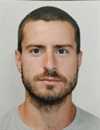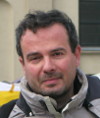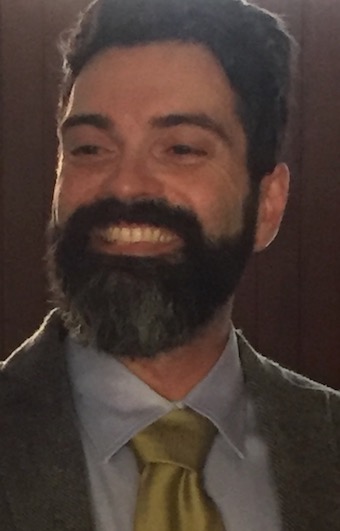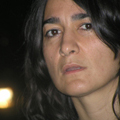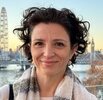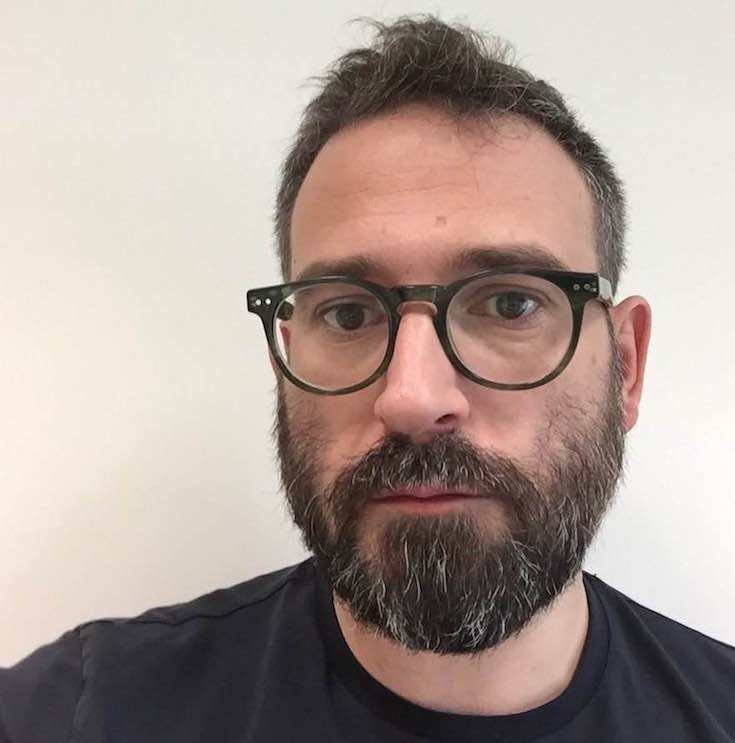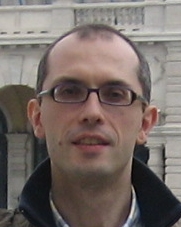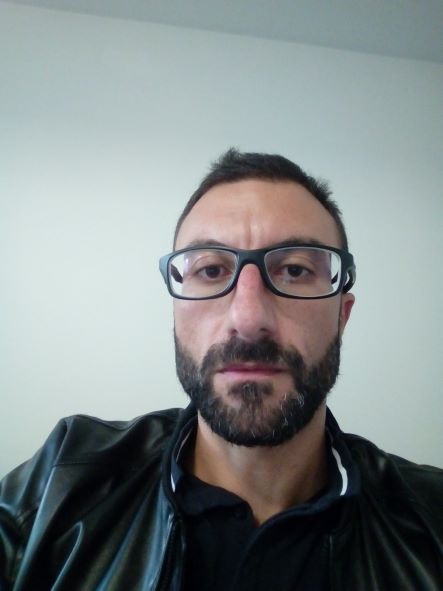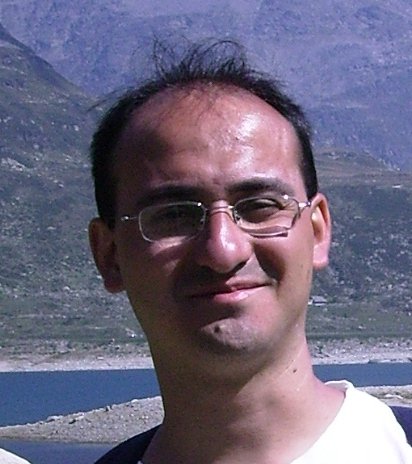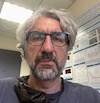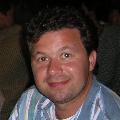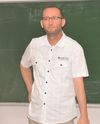Studying at the University of Verona
Here you can find information on the organisational aspects of the Programme, lecture timetables, learning activities and useful contact details for your time at the University, from enrolment to graduation.
Academic calendar
The academic calendar shows the deadlines and scheduled events that are relevant to students, teaching and technical-administrative staff of the University. Public holidays and University closures are also indicated. The academic year normally begins on 1 October each year and ends on 30 September of the following year.
Course calendar
The Academic Calendar sets out the degree programme lecture and exam timetables, as well as the relevant university closure dates..
| Period | From | To |
|---|---|---|
| Primo semestre | Oct 4, 2021 | Jan 28, 2022 |
| Secondo semestre | Mar 7, 2022 | Jun 10, 2022 |
| Session | From | To |
|---|---|---|
| Sessione invernale d'esame | Jan 31, 2022 | Mar 4, 2022 |
| Sessione estiva d'esame | Jun 13, 2022 | Jul 29, 2022 |
| Sessione autunnale d'esame | Sep 1, 2022 | Sep 30, 2022 |
| Period | From | To |
|---|---|---|
| Festa di Tutti i Santi | Nov 1, 2021 | Nov 1, 2021 |
| Festa dell'Immacolata Concezione | Dec 8, 2021 | Dec 8, 2021 |
| Festività natalizie | Dec 24, 2021 | Jan 2, 2022 |
| Festa dell'Epifania | Jan 6, 2022 | Jan 7, 2022 |
| Festività pasquali | Apr 15, 2022 | Apr 19, 2022 |
| Festa della Liberazione | Apr 25, 2022 | Apr 25, 2022 |
| Festa di San Zeno - S. Patrono di Verona | May 21, 2022 | May 21, 2022 |
| Festa della Repubblica | Jun 2, 2022 | Jun 2, 2022 |
| Chiusura estiva | Aug 15, 2022 | Aug 20, 2022 |
Exam calendar
Exam dates and rounds are managed by the relevant Science and Engineering Teaching and Student Services Unit.
To view all the exam sessions available, please use the Exam dashboard on ESSE3.
If you forgot your login details or have problems logging in, please contact the relevant IT HelpDesk, or check the login details recovery web page.
Should you have any doubts or questions, please check the Enrollment FAQs
Academic staff
 elena.antelmi@univr.it
elena.antelmi@univr.it
 anna.barbieri@univr.it
anna.barbieri@univr.it
 mauro.bonafini@univr.it
mauro.bonafini@univr.it
 maurizio.boscaini@univr.it
maurizio.boscaini@univr.it
 mila.dallapreda@univr.it
mila.dallapreda@univr.it
 michele.ginesi@univr.it
michele.ginesi@univr.it
 giovannigerardo.muscolo@univr.it
giovannigerardo.muscolo@univr.it
 giandomenico.nollo@unitn.it
giandomenico.nollo@unitn.it
 andrea.roberti@univr.it
andrea.roberti@univr.it
 luca.selmi@unimore.it
luca.selmi@unimore.it
 claudio.tomazzoli@univr.it
claudio.tomazzoli@univr.it
 federico.tramarin@univr.it
federico.tramarin@univr.it
 ihsen.yengui@univr.it
ihsen.yengui@univr.it
 franco.zivcovich@univr.it
franco.zivcovich@univr.it
 simone.zuccher@univr.it
simone.zuccher@univr.it
Study Plan
The Study Plan includes all modules, teaching and learning activities that each student will need to undertake during their time at the University.
Please select your Study Plan based on your enrollment year.
1° Year
| Modules | Credits | TAF | SSD |
|---|
2° Year activated in the A.Y. 2022/2023
| Modules | Credits | TAF | SSD |
|---|
3° Year activated in the A.Y. 2023/2024
| Modules | Credits | TAF | SSD |
|---|
1 MODULE TO BE CHOSEN BETWEEN THE FOLLOWING| Modules | Credits | TAF | SSD |
|---|
| Modules | Credits | TAF | SSD |
|---|
| Modules | Credits | TAF | SSD |
|---|
1 MODULE TO BE CHOSEN BETWEEN THE FOLLOWING| Modules | Credits | TAF | SSD |
|---|
Altre attività formative: lo studente può scegliere tra le 2 seguenti opzioni: a) 2 CFU di seminari al 2 anno e 7 CFU di tirocinio al 3 anno oppure b) 9 CFU di tirocinio al 3 anno.Legend | Type of training activity (TTA)
TAF (Type of Educational Activity) All courses and activities are classified into different types of educational activities, indicated by a letter.
Integrated development of devices and collaborative robots for the biomendical industry (2023/2024)
Teaching code
4S009881
Academic staff
Coordinator
Credits
6
Language
Italian
Scientific Disciplinary Sector (SSD)
ING-INF/04 - SYSTEMS AND CONTROL ENGINEERING
Period
Semester 1 dal Oct 2, 2023 al Jan 26, 2024.
Courses Single
Authorized
Learning objectives
The course introduces the basic knowledge to develop, design, produce, and assemble medical devices, with particular reference to the use and control of collaborative robots in the medical and biomedical environment. The course develops the basic skills to set up a product development project, considering both the mechanical and structural aspects and the control and management aspects.
Prerequisites and basic notions
None
Program
Industrial Robotics fundamentals
- Introduction to robotics: What is a robot? Robots History. Robot classification. Evolution toward Industrial robots. Other kind of robots: service robots, exoskeletons. Medical robotics.
- Robot’s functional units: Mechanical Structure: joints, links, end-effector, workspace, robot classification based on joint arrangement. Overview of functional units of a robot: sensors, actuators, etc.
- Kinematics of a rigid body: Position and orientation of a rigid body. Reference frames. Rotation matrices (properties, composition, and interpretations). Derivative of a rotation matrix. Minimal representations of orientation. Skew-symmetric matrices. Euler angles. Relation between Euler rates and angular velocity. Unit quaternions.
- Manipulator direct kinematics: Definition of forward and inverse kinematics. Joint, task and actuation spaces. Generalized coordinates. Denhavit-Hartenberg notation. Forward kinematics of robot manipulators. Homogeneous transformations (properties, composition and interpretations). Inverse of a homogeneous transformation matrix. Frame placement. Direct kinematics of a kinematic chain.
- Inverse Kinematics: Definition of inverse kinematics. Solvability and workspace. Closed form (analytical) solutions. Examples.
- Direct Differential Kinematics: Linear and angular velocity of a rigid body. Linear and angular velocity of a manipulator link driven from prismatic or revolute joints. Contribution of prismatic and revolute joints to end-effector velocity. The Geometric Jacobian. The Analytical Jacobian. Relationship between Geometric and Analytical Jacobian.
- Redundancy and Singularities: Definition of redundancy. Redundant manipulators. Primer on linear algebra sub-spaces. The pseudo-inverse. Geometric interpretation of inverse kinematics mapping. Singular values. Definition of singularity. Types of singularities. Inverse differential kinematics and singularities. Damped least-squares method. Higher order differential inversion.
Simulation of robotic solutions
- Fundamental components of a robotic system. Collaborative robotics and safety of human-robot interaction (the main safety standards). Examples of collaborative robotics solutions applied to the biomedical field. The design process of robotic solutions.
- Tools for the simulation and analysis of robotic solutions. Presentation of ROS - Robot Operating System. Configuration and first steps.
- Implementation of a manipulation solution with ROS. Setup of ROS environment. Python fundamentals. ROS environment architecture and first exercises. Matrix transformations. Modeling of serial manipulators - URDF file - with examples on Denhavit-Hartenberg convention application and URDF modeling to commercial robots. Trajectory planning - MoveIt and Gazebo. Preparing robotic environments in Gazebo - objects modeling. Modeling of robot grippers. Modeling of vision systems (cameras) for object localization. Python scripts for defining robot trajectories. Setup and simulation of a pick and place process.
Bibliography
Didactic methods
The teaching includes theoretical and laboratory lectures. The lectures will be held in the classroom/laboratory with streaming sharing. At the end of the lectures, the recordings are made available on the moodle/panotopo platform. During the theoretical and laboratory lectures, exercises will be carried out to consolidate the learning of theoretical notions. The laboratory activity presents and uses open-source simulation tools widely used by the scientific community, such as ROS environment and apps and Python programming language. Along the laboratory activities, a whole case study will be implemented. To stimulate the constant and active participation of students, exercises will be proposed. Teaching material developed from reference books provided during lessons.
Learning assessment procedures
The exam is composed by two different tests. A written test to evaluate theoretical skills (multiple option questions and/or open questions) – duration 90 minutes. A second test which consists in the oral discussion of a robotic project: project group realted to the simulation of a robotic process developed in the ROS environment - it requieres to deliver the ROS code and the presentation before the day of oral discussion - duration of the oral presentation 20 minutes.
Evaluation criteria
To pass the exam, students will have to demonstrate that they understand the fundamental mathematical modeling used in industrial robotics - matrix calculus, extrapolation of DH parameters, exercises for direct/inverse kinematics derivation. Furthermore, they must demonstrate knowledge of ROS by answering theoretical questions related to the structure of the environment.
To asses practical skills, students should demonstrate to implement a simulation in the ROS environment using material collected autonomously as well as models and scripts presented during the laboratory lectures.
Criteria for the composition of the final grade
The two tests will be evaluated separately. The final grade is obtained as the arithmetic mean between the two tests - which must have both a positive grade. The evaluation of the oral presentation of the project can provide for the differentiation of the grade between the project participants.
Exam language
Italiano
Type D and Type F activities
Le attività formative di tipologia D sono a scelta dello studente, quelle di tipologia F sono ulteriori conoscenze utili all’inserimento nel mondo del lavoro (tirocini, competenze trasversali, project works, ecc.). In base al Regolamento Didattico del Corso, alcune attività possono essere scelte e inserite autonomamente a libretto, altre devono essere approvate da apposita commissione per verificarne la coerenza con il piano di studio. Le attività formative di tipologia D o F possono essere ricoperte dalle seguenti attività.
1. Insegnamenti impartiti presso l'Università di Verona
Comprendono gli insegnamenti sotto riportati e/o nel Catalogo degli insegnamenti (che può essere filtrato anche per lingua di erogazione tramite la Ricerca avanzata).
Modalità di inserimento a libretto: se l'insegnamento è compreso tra quelli sottoelencati, lo studente può inserirlo autonomamente durante il periodo in cui il piano di studi è aperto; in caso contrario, lo studente deve fare richiesta alla Segreteria, inviando a carriere.scienze@ateneo.univr.it il modulo nel periodo indicato.
2. Attestato o equipollenza linguistica CLA
Oltre a quelle richieste dal piano di studi, per gli immatricolati A.A. 2021/2022 e A.A. 2022/2023 vengono riconosciute:
- Lingua inglese: vengono riconosciuti 3 CFU per ogni livello di competenza superiore a quello richiesto dal corso di studio (se non già riconosciuto nel ciclo di studi precedente).
- Altre lingue e italiano per stranieri: vengono riconosciuti 3 CFU per ogni livello di competenza a partire da A2 (se non già riconosciuto nel ciclo di studi precedente).
Tali cfu saranno riconosciuti, fino ad un massimo di 3 cfu complessivi, di tipologia D. Solo nel caso in cui la data di acquisizione della certificazione sia precedente al 27/10/2023 (data della delibera del Collegio didattico di Ingegneria dell'Informazione) potranno essere riconosciuti un massimo di 6 CFU, come precedentemente previsto. Ulteriori crediti a scelta per conoscenze linguistiche potranno essere riconosciuti solo se coerenti con il progetto formativo dello studente e se adeguatamente motivati.
Per gli immatricolati A.A. 2023/2024 i crediti per certificazioni linguistiche ulteriori a quelle previste dal piano didattico vengono riconosciuti come crediti sovrannumerari taf D.
Modalità di inserimento a libretto: richiedere l’attestato o l'equipollenza al CLA e inviarlo alla Segreteria Studenti - Carriere per l’inserimento dell’esame in carriera, tramite mail: carriere.scienze@ateneo.univr.it
3. Competenze trasversali
Scopri i percorsi formativi promossi dal TALC - Teaching and learning center dell'Ateneo, destinati agli studenti regolarmente iscritti all'anno accademico di erogazione del corso https://talc.univr.it/it/competenze-trasversali
Modalità di inserimento a libretto: non è previsto l'inserimento dell'insegnamento nel piano di studi. Solo in seguito all'ottenimento dell'Open Badge verranno automaticamente convalidati i CFU a libretto. La registrazione dei CFU in carriera non è istantanea, ma ci saranno da attendere dei tempi tecnici.
4. Periodo di stage/tirocinio
Oltre ai CFU previsti dal piano di studi (verificare attentamente quanto indicato sul Regolamento Didattico): qui il VADEMECUM DELLE ATTIVITÀ DI TIROCINIO (indirizzo email della Commissione tirocini: tirocini-ismp@ateneo.univr.it ); qui la relativa pagina informativa (con link a moodle); qui informazioni su come attivarlo.
Insegnamenti e altre attività che si possono inserire autonomamente a libretto
| years | Modules | TAF | Teacher |
|---|---|---|---|
| 1° | Subject requirements: mathematics | D |
Franco Zivcovich
|
Career prospects
Module/Programme news
News for students
There you will find information, resources and services useful during your time at the University (Student’s exam record, your study plan on ESSE3, Distance Learning courses, university email account, office forms, administrative procedures, etc.). You can log into MyUnivr with your GIA login details: only in this way will you be able to receive notification of all the notices from your teachers and your secretariat via email and soon also via the Univr app.
Attendance
The inter-university nature of the course of study lies in the cooperation of the three universities in the provision of faculty. Therefore, teaching delivery takes place at the administrative and teaching site in Verona and not in the partner universities. This means that it is not possible to attend this bachelor's degree program in the University of Trento or Modena-Reggio Emilia; however, it is possible to use the study spaces of the partner universities, thanks to the agreement between them.
As stated in the Didactic Regulations for A.Y. 2022/2023, course attendance is not mandatory.
Career management
Student login and resources
Erasmus+ and other experiences abroad
Graduation
List of theses and work experience proposals
| theses proposals | Research area |
|---|---|
| THESIS_1: Sensors and Actuators for Applications in Micro-Robotics and Robotic Surgery | Various topics |
| THESIS_2: Force Feedback and Haptics in the Da Vinci Robot: study, analysis, and future perspectives | Various topics |
| THESIS_3: Cable-Driven Systems in the Da Vinci Robotic Tools: study, analysis and optimization | Various topics |



 0461 283551
0461 283551

